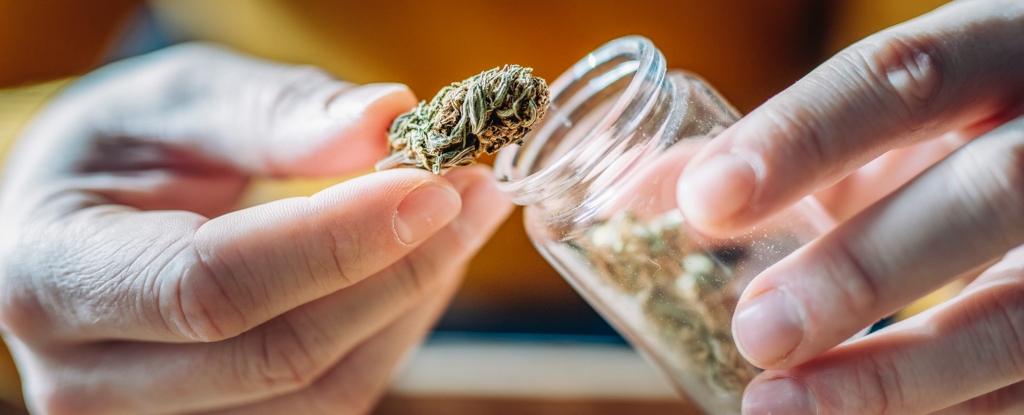Products You May Like
Cannabis flower sold in Colorado claims to contain much more tetrahydrocannabinol, or THC, than it actually does, according to my findings published in the peer-reviewed journal PLOS ONE.
THC is the psychoactive compound that is derived when cannabis flower – commonly referred to as “bud” – is heated through smoking or cooking.
Why it matters
Accurate THC reporting is a linchpin for medical patients, recreational consumers and the overall integrity of the cannabis industry. Medical and recreational flower is generally the same – the difference is in testing requirements, price, taxes and purchase limits. Misleading potency information can disrupt medical dosages, misguide recreational users and erode trust in an industry striving for legitimacy.
Consumers often associate higher THC levels in cannabis flower with superior quality, potentially leading to overpayment for products that may not meet their expectations. This misconception can also create incentives for cultivators, testing labs and dispensaries to generate higher THC numbers – whether through cultivation techniques or through testing fraud.
Additionally, testing for toxins, pesticides and total yeast and mold can also fall victim to falsification. Recent reports reveal instances where labs in New York and other states have passed products that should have failed. This casts doubt on the credibility of the broader testing processes in place.
How I did my work
I gathered a total of 23 cannabis flower samples from 10 dispensaries across the northern Colorado Front Range, which includes Denver, Fort Collins and Garden City. The samples encompassed 12 strains, including indica, sativa and hybrid types, and varied in reported THC values.
Some had ranges, such as 12.8 percent-19.3 percent on the lower end and 28.07 percent-31.28 percent on the higher end, while others had single values, such as 16.4 percent or 17.4 percent.
I sent the samples to a third-party testing lab that does high-performance liquid chromatography, or HPLC. HPLC is a method to separate, identify and quantify components in mixtures based on their chemical properties. It is the most commonly used method in cannabis testing to analyze cannabinoids and detect contaminants. This can ensure product potency, safety and quality.
Approximately 70 percent of the labels reported THC percentages more than 15 percent higher than what was quantified through the lab.
Among the 23 flower samples analyzed, 18 displayed lower THC levels than reported – with 16 falling below 15 percent of the stated value, 13 falling below 30 percent of the reported THC and three samples falling below half of the reported THC. Notably, only one sample had slightly higher THC than reported. Four were within the reported range.
The observed disparity was not due to aging. When THC ages and degrades, it turns into cannabinol, or CBN. CBN was not found in measurable amounts in any of the samples, however, and further testing indicated stable THC levels over time.
What still isn’t known
A fundamental query looms large: With advancements in cultivation techniques, including lighting, nutrients and selective breeding, has the potency of cannabis flower genuinely surged over the past 15 years?
THC levels averaged 9.75 percent back in 2009, based on testing of DEA-seized cannabis flower. Today, levels reportedly surpass 35 percent, though they’re not as common as consumers have been led to believe. DEA-seized cannabis flower averaged 13.88 percent in 2019, which is closer to my observed mean of 14.98 percent than the reported mean of my samples, which was 20.27 percent-24.10 percent.
We also do not know who is responsible for the misinformation regarding inflated THC potency for cannabis flower. It could be cultivators or dispensaries selecting the best flowers to test. Sampling guidelines differ by state, but all require a random sample from the entire batch.
But there is little to no oversight when it comes to enforcing these guidelines. It could also be lab fraud. Facilities might manipulate the testing process or doctor numbers on the certificate of analysis to ensure repeat business from producers and distributors who set prices based on THC content, or to generate new customers.
What’s next
I believe a critical next step is for the cannabis industry to educate consumers on how to make more informed choices by looking beyond mere THC percentages. People generally do not shop for wine or beer based on alcohol content.
Instead of focusing on THC content, a novice cannabis consumer might consider brands that are reputable or strains that have an aroma or flavor profile they enjoy. Eventually, they may move on to find a favorite breeder or grower, or a trusted dispensary that employs a knowledgeable budtender. A budtender is akin to a bartender in a dispensary setting, serving as a customer representative.
Cannabis consumers, industry players and the public must also continue to advocate for better oversight in sampling and testing to ensure safety, transparency and accountability and to foster trust from the cannabis community.![]()
Anna Schwabe, Associate Lecture Professor of Modern Cannabis Science, University of Colorado Boulder
This article is republished from The Conversation under a Creative Commons license. Read the original article.
